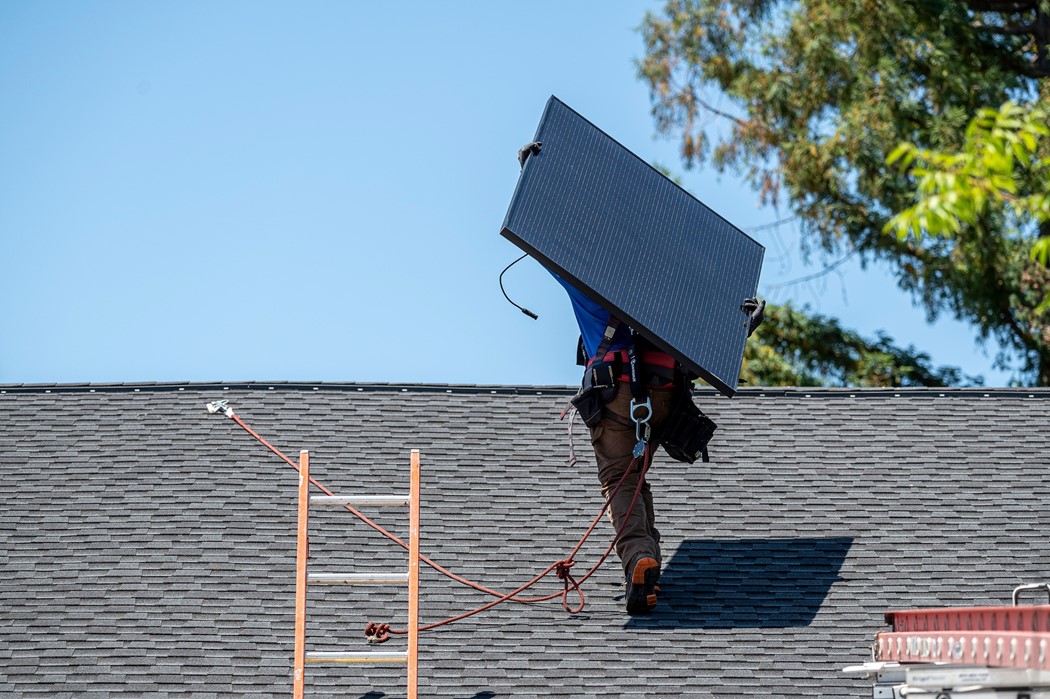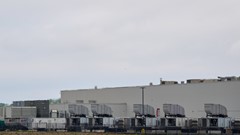Want Solar Panels on Your Roof? How to Navigate Market and Tariff Chaos
Apr 28, 2025 by Bloomberg(Bloomberg) -- Google “solar panels for my house” and big national companies like SunPower and Tesla appear near the top of the search. But SunPower went bankrupt last year and Tesla’s solar business has shrunk. Another powerhouse, Sunnova, is teetering on the edge of insolvency.
The eclipse of many of these brand-name residential solar firms, which supplied about 25% of the US market, comes at a time when the country has raised tariffs on solar panels as much as 3,521% and states like California have slashed homeowner subsidies. President Donald Trump has also threatened to eliminate a 30% tax credit for installing solar systems, a key incentive that’s helped bring the sector into the mainstream.
With most of the big players struggling, local installers are set to become an increasingly common way Americans get solar panels.
“We probably picked up half a dozen customers who had pending installations with SunPower prior to them going bankrupt and now all the people who potentially would have gone with SunPower are looking elsewhere,” said Reuben Ly, sales manager for A1 Sun, a family-owned solar company in Berkeley, California, that serves the Bay Area. (Solar company Complete Solaria rebranded itself last week as SunPower after buying some of the company’s assets out of bankruptcy.)
Given the volatility with tariffs that can change daily and new proposals to further cut state subsidies, like one in California, choosing the right installer has become even more crucial. Here’s what you need to know.
Big Solar’s Big Bust
High interest rates have made it more expensive to buy, finance or lease home solar systems, which can cost around $20,000. California, the biggest US market, has cut credits owners receive on their utility bills for supplying electricity to the grid at the urging of the state’s investor-owned utilities and some consumer advocates who say the incentives penalize households that can’t afford to go solar. The rollback has resulted in a steep drop in installations and the loss of thousands of jobs.
Overall, residential installations in the US fell 32% in 2024 compared to the prior year, according to a March report from the Solar Energy Industries Association and Wood Mackenzie. While the report forecasts the market to grow 9% in 2025, some analysts now expect another year of decline.
Most rooftop companies don’t make panels — and, at least in the case of Sunnova, don’t install them. These bigger companies mainly act as financiers, arranging leases for rooftop arrays or selling the electricity they generate to homeowners that don’t want to incur the upfront cost of buying solar panels.
This model is a product of the US’s uniquely convoluted patchwork of state and federal tax credits, subsidies and renewable energy mandates. The way it works is companies take the 30% federal tax credit for solar equipment they lease and then bundle leases and power purchase agreements into asset-backed securities they sell to investors. They then use those proceeds to help finance their growth by investing in selling more systems.
“In most countries, the economics of residential solar don’t depend so heavily on complex and hard-to-monetize tax incentives,“ said BloombergNEF analyst Pol Lezcano.
That overhead and an expensive and byzantine permitting process that differs from city to city means US homeowners pay three times or more for solar than Australians and Europeans.
“Solar in every market around the world is dominated by small companies that are in the community and don’t have these acquisition costs and structural costs,” said industry veteran Andrew Birch, who co-founded California solar company Sungevity in 2008. It rapidly expanded to become the US’ fifth largest solar installer before collapsing in 2017 as debt piled up. He’s now CEO of OpenSolar, which develops software for local installers to design, sell and manage projects.
The Solar Shift
The implosion of several big solar companies means that buyers in the US also will turn more to local installers. That change could benefit homeowners, according to experts. That’s because the cost of solar systems sold by national companies includes significant expenditures on salespeople and marketing. “The larger players tend to have a very high cost of customer acquisition and pretty high overhead on top of that,” said Charlie Hadlow, president of EnergySage, a Boston-based company that operates an online solar marketplace for consumers.
For instance, the solar panels themselves typically account for just 12% of the price of an installation, according to EnergySage, with most costs incurred from sales, marketing, labor and permitting.
Small companies have also been buffeted by the market turmoil but often haven’t incurred the liabilities of national firms. “A lot of my customers are cash customers and we never got into leases,” said Martyna Kowalczyk, chief executive officer of Solartime, a Dallas-area installer founded by her father in 2015.
Local installers like Solartime and A1 Sun tend to rely on word-of-mouth referrals and positive customer reviews on sites like Yelp, Google and Nextdoor.
“We have zero marketing budget and zero marketing staff but we have about seven to eight months of business booked out,” said Ly.
Sunrun, the nation's biggest rooftop solar company, sells, installs, leases and services home energy systems. Most of their customers opt for solar as a service, meaning they pay no upfront costs.
“While there are always lower-cost options in any market, the value we provide has proven time and again to have broad appeal with consumers and is a key reason Sunrun remains the industry leader," said a company spokesperson.Tesla and Sunnova declined to comment.
Shopping for Solar
EnergySage’s Hadlow said homeowners should carefully vet installers that show up on their internet search, asking whether they subcontract out work and about the brand and warranties of the solar panels and batteries they install.
Where a panel is made matters: The US has imposed steep tariffs on those manufactured in Southeast Asia, which supplies about 80% of the national market. Though developers have stockpiled panels in anticipation of the import taxes, you should still ask installers what country made the panels they use and when they were imported so you don’t unnecessarily pay a premium.
“Look for local and regional installers that live and work near where they're making the installation,” said Hadlow. “That tends to work out pretty well if they have competitive pricing and really strong reviews.”
You also want an installer who can navigate changing state and federal rebates and tax and utility credits and is an expert on designing systems that can manage everything from battery storage devices to EV chargers.
Local installers, though, may offer fewer options to pay for solar than the big companies. Some smaller firms only sell their systems, but Hadlow said more installers now offer leases. Carefully scrutinize leases and third-party financing as they often contain provisions that dramatically increase the cost of a solar system over its lifetime. Obtaining a loan from a local credit union can be a better option.
These firms can also help you if you already have a solar array from a bankrupt company or want to add battery storage, a requirement in states like California if you want to obtain the most generous subsidies. Many home batteries are imported from China and thus are being hit with high tariffs, so it’s important to ask about the brand of a home energy storage system.
Kowalczyk said the failure of big solar providers in recent years has helped keep Solartime afloat as Dallas area homeowners hire her company to service their orphaned systems. Ly of A1 Solar in Berkeley said his company also receives weekly calls from such homeowners and sees an opportunity to integrate batteries, electric vehicle chargers and software with those stranded solar arrays.
“What companies like ours install now would now be more aptly be described as energy management systems,” he said. “It's become a much more complicated installation process” than just putting solar panels on roofs.
©2025 Bloomberg L.P.
By


















